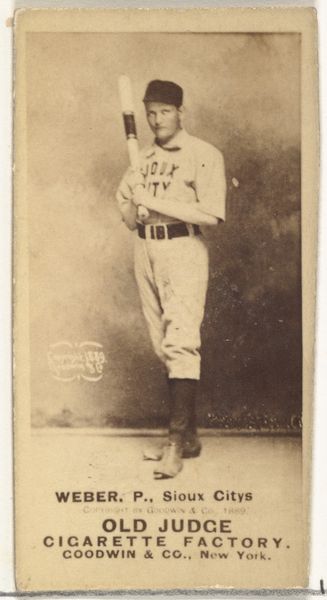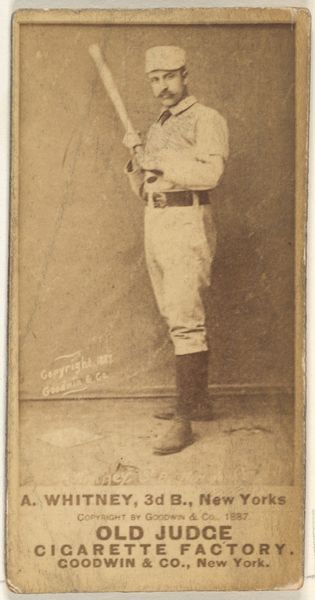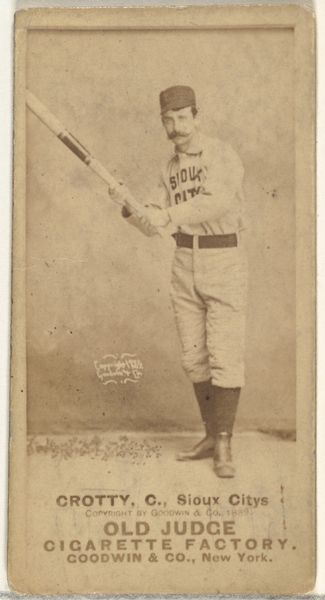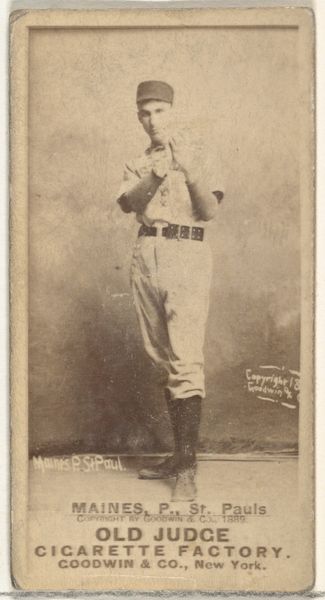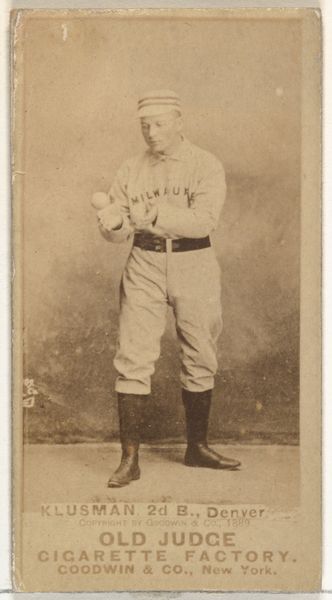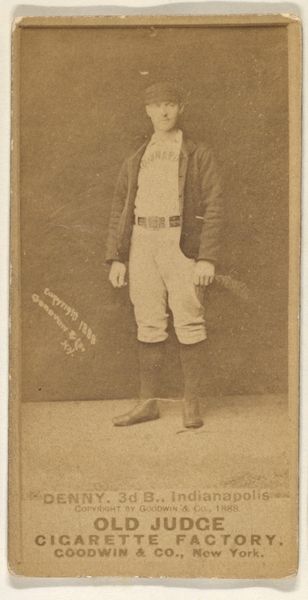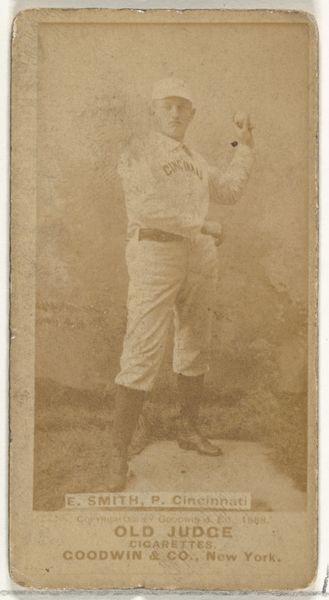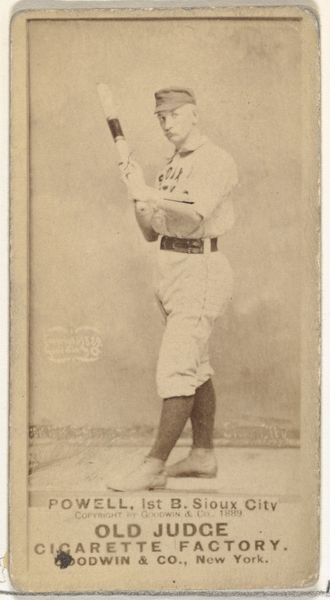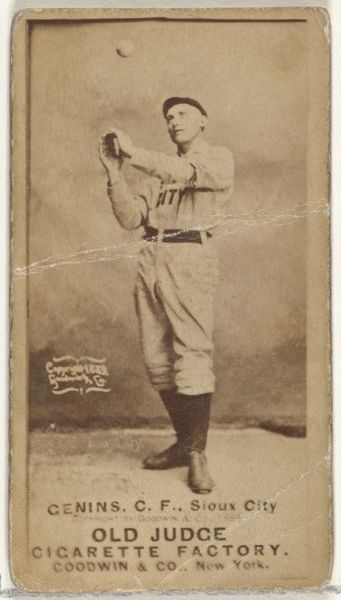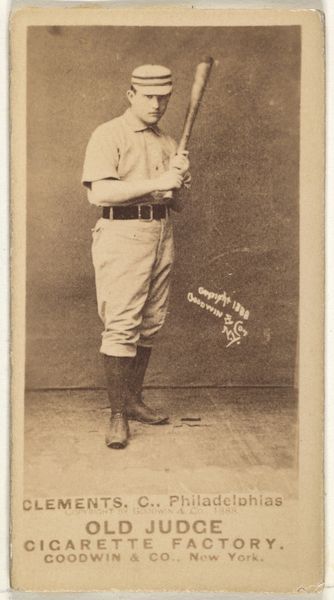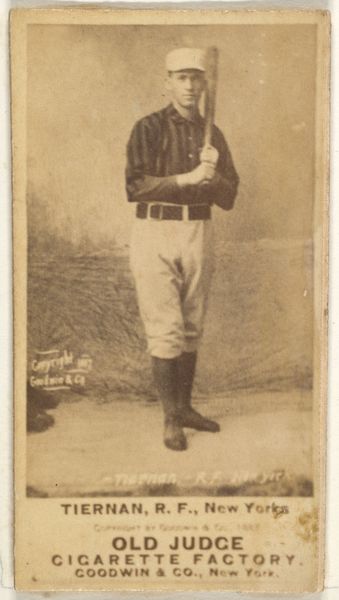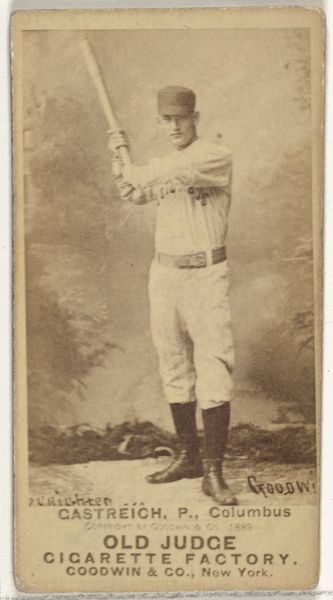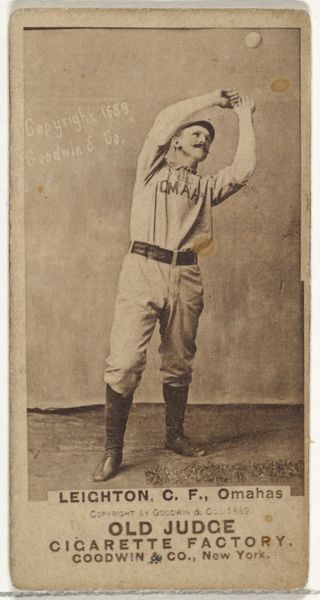
Robert E. Burks, Shortstop, Sioux City Corn Huskers, from the Old Judge series (N172) for Old Judge Cigarettes 1889
0:00
0:00
drawing, print, photography
#
portrait
#
drawing
# print
#
baseball
#
photography
#
men
#
athlete
Dimensions: sheet: 2 11/16 x 1 3/8 in. (6.9 x 3.5 cm)
Copyright: Public Domain
Curator: Standing before us is a fascinating artifact titled "Robert E. Burks, Shortstop, Sioux City Corn Huskers" from the Old Judge series, crafted around 1889. These cards were distributed with Old Judge Cigarettes, published by Goodwin & Company. Editor: There's a quiet stoicism in Burks's stance, isn't there? He holds that baseball almost protectively. But it's that aged, sepia tone of the print that really draws me in—it speaks volumes about the history embedded within. Curator: Indeed, the limited tonal range focuses the eye, directing attention to Burks's gaze and posture. Observe the composition: the figure centered, bisected vertically, with the horizon line hitting around his mid-thigh. This creates a balance and hierarchy, establishing the athlete as the subject of reverence. It adheres strictly to pictorial conventions, though I think these trade cards offer us glimpses into period aesthetics through these parameters, not in spite of them. Editor: More than aesthetics, I think this work highlights the very tactile, social context of baseball and cigarette production. Think about the labor involved—growing tobacco, manufacturing cigarettes, printing these cards. This image, seemingly simple, is a product of very complex, connected industries. Also, imagine its path—from factory to the customer who purchased it to possibly the person who collected these cards of different players and perhaps knew the details of each one of them. Curator: Agreed. Consider the textual framing surrounding the image. The bold typeface proclaims “Old Judge Cigarette Factory,” seamlessly merging athleticism and leisure through branding. It's a carefully calculated strategy, reinforcing societal associations that speak volumes about production, recreation, and turn-of-the-century America. Editor: Absolutely. The card functioned both as advertisement and as a collectible commodity in itself. And don't overlook how fragile and delicate these images are, often discarded—but now preserved, they prompt inquiries into past industries, labor conditions, and leisure activities. Curator: Precisely. From a formalist perspective, it encapsulates that period's artistic ideologies by adhering to standards of balance and symmetry that promote stability; whereas from a materialist standpoint, we discern networks connecting industries, consumer habits, and labor during that period. Editor: And that tension, I believe, makes these seemingly quaint images utterly fascinating documents.
Comments
No comments
Be the first to comment and join the conversation on the ultimate creative platform.
